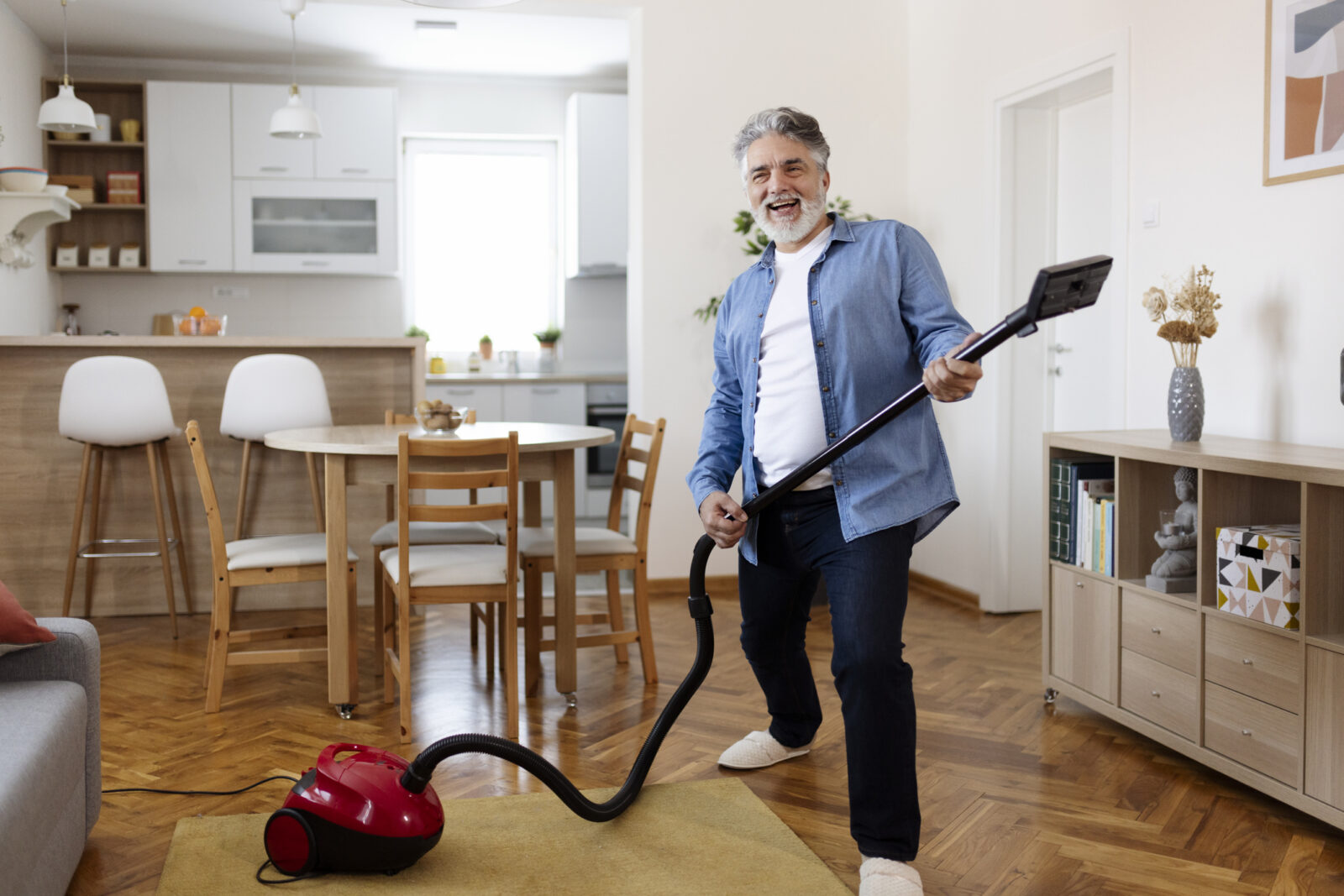Spring Cleaning for Seniors

Canadian author L.M. Montgomery declared “Nothing ever seems impossible in spring, you know.” That includes organizing and cleaning our homes with the annual ritual of spring cleaning. For seniors, a thorough spring cleaning isn’t just about tidying up—it’s about fostering a safe, welcoming environment that promotes both physical and emotional well-being.
Clutter can contribute to falls and stress, affecting both physical and mental health. By keeping an organized home environment, seniors can enjoy greater mobility, independence, and overall well-being. But spring cleaning can feel overwhelming, especially if memories and items have collected over the years. Here are eight practical tips for getting the most out of organizing and decluttering.
- Address safety concerns first. Remove tripping hazards from the floor, like scattered shoes or dropped clothing. Secure loose rugs with rug pads, corner grippers, or rug tape. Rearrange electrical cords so they don’t cross pathways.
- Focus on one thing at a time. When decluttering, dedicate yourself to one room at a time. Begin with the most used areas like the living room or bedroom. If a room is too big of a task, work on something small: clean out the junk drawer or collect like items in one place.
- Use a system to be strategic. Many people sort through belongings and categorize them according to three boxes: keep, toss, and donate. Others employ the Marie Kondo method of asking “Does this bring me joy?” with each item. Pick an approach that makes sense to you; feel free to tailor it to your needs and priorities, such as renaming the three boxes or asking a different question.
- Value the memories. It’s ok to spend time reminiscing as you go through meaningful items, especially if you will be donating or discarding them. Taking a photo is one way to let go without forgetting. Remember: you don’t have to have all your spring cleaning done in a day, week, or even month. Spring is three months, after all!
- Rethink storage placements. Baskets and bins are terrific ways to quickly organize and store things. In addition to how you store items, consider where you store them. For items needed daily or often, make sure to place them in an easy-to-access location. Vertical space can free up floor area and create a more open and spacious feel, but there are dangers in having to climb stepladders and reach for things.
- Modify floorplans for movement. Consider rearranging rooms to enhance ease of access. Are there unneeded or unappreciated furniture pieces? Remove them for a more open floorplan. If possible, use pieces for multiple functions, such as an ottoman for storage or a collapsible table which can take up less space when unneeded.
- Use digital tools to reduce paper clutter. In today’s digital age, decluttering extends beyond physical belongings. Online storage of photos, documents, and correspondence can reduce the amount of space needed to store paper— as long as it’s organized. If comfortable, sign up for virtual bills and statements; with an online account, you can easily see past documents as well.
- Turn it into a shared activity. Invite family members, friends, and other loved ones to join in. They might want the extra furniture or be able to help with organizing digital files. They certainly can make the walk down memory lane more pleasant. Working together not only makes the process more manageable but also fosters a sense of collaboration and support.
Spring cleaning time is also a great opportunity to review overall home safety. For example, maybe grab bars should be added in the bathroom or brighter lighting installed on the front porch. Plus, it’s a great reminder to ensure that smoke detectors and carbon monoxide detectors are working, and emergency contact information is up to date.
Home is where the heart is. But it also is where we should be able to age safely and securely.
![Family Home Health [logo]](https://www.familyhomehealthnetwork.com/wp-content/uploads/sites/250/2017/04/logo-new.png)